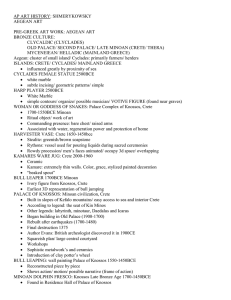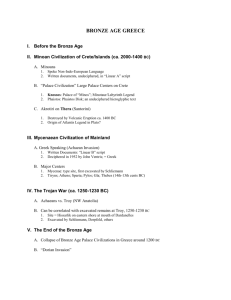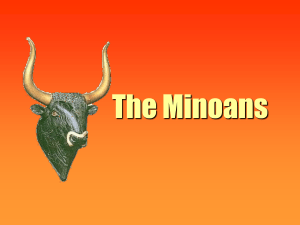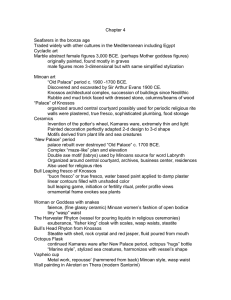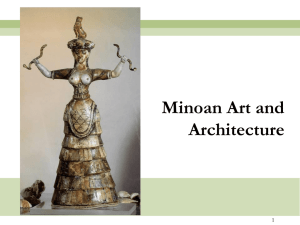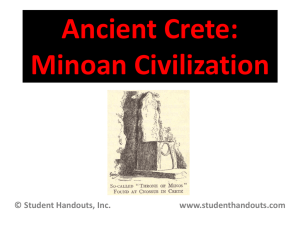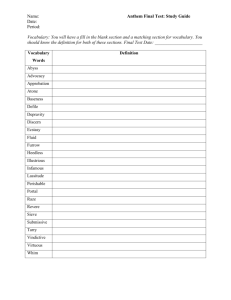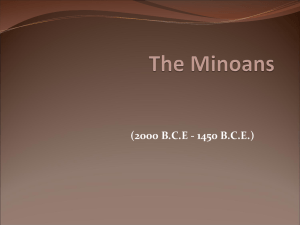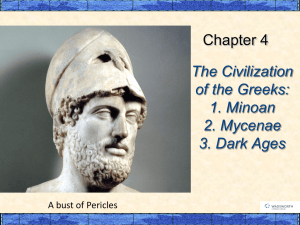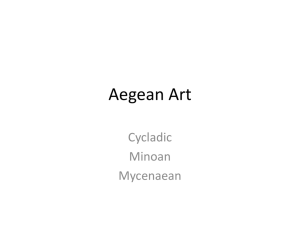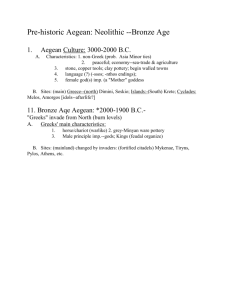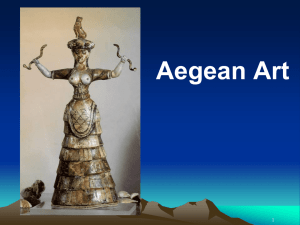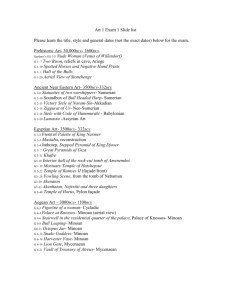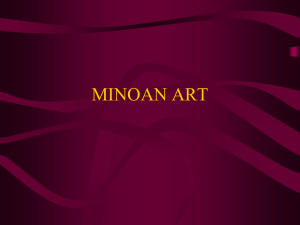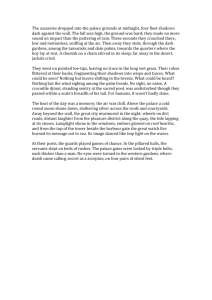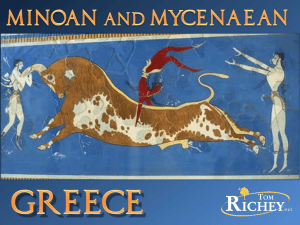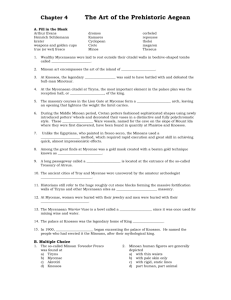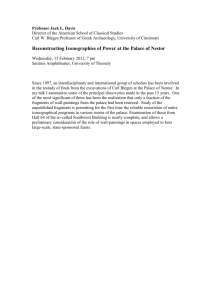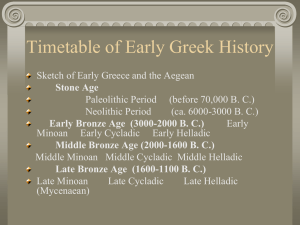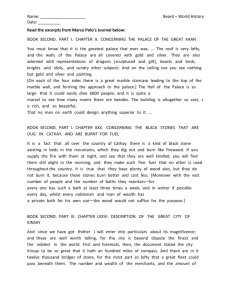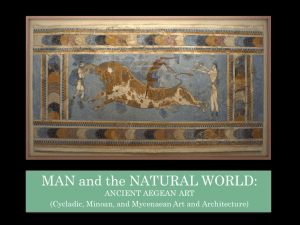Syllabus
advertisement
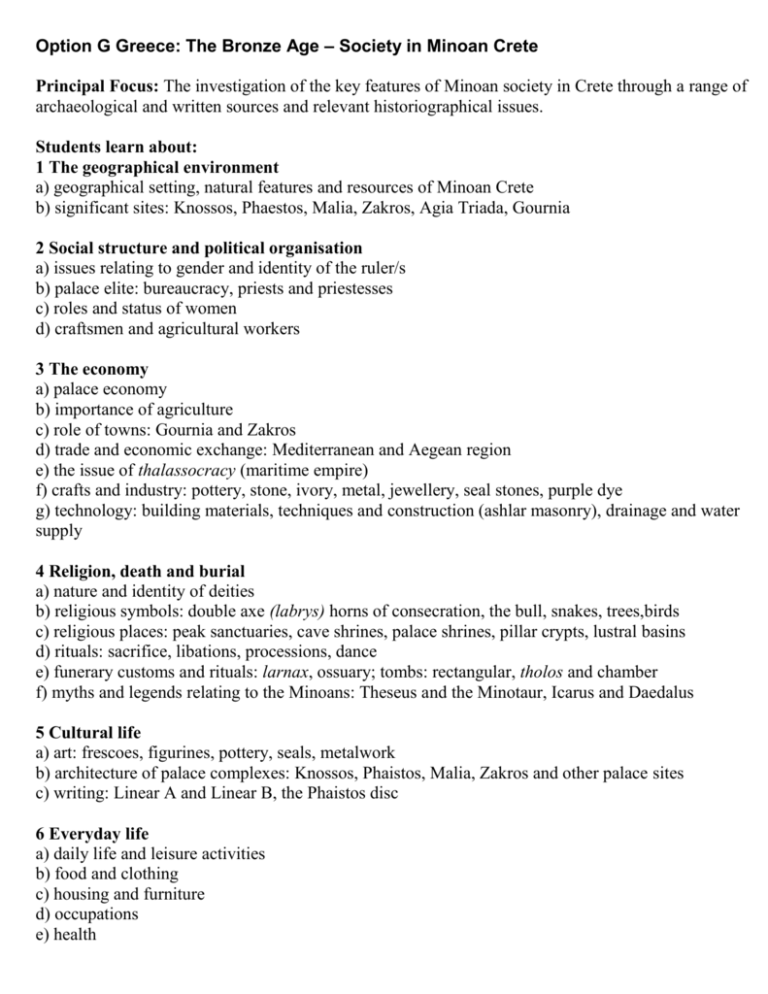
Option G Greece: The Bronze Age – Society in Minoan Crete Principal Focus: The investigation of the key features of Minoan society in Crete through a range of archaeological and written sources and relevant historiographical issues. Students learn about: 1 The geographical environment a) geographical setting, natural features and resources of Minoan Crete b) significant sites: Knossos, Phaestos, Malia, Zakros, Agia Triada, Gournia 2 Social structure and political organisation a) issues relating to gender and identity of the ruler/s b) palace elite: bureaucracy, priests and priestesses c) roles and status of women d) craftsmen and agricultural workers 3 The economy a) palace economy b) importance of agriculture c) role of towns: Gournia and Zakros d) trade and economic exchange: Mediterranean and Aegean region e) the issue of thalassocracy (maritime empire) f) crafts and industry: pottery, stone, ivory, metal, jewellery, seal stones, purple dye g) technology: building materials, techniques and construction (ashlar masonry), drainage and water supply 4 Religion, death and burial a) nature and identity of deities b) religious symbols: double axe (labrys) horns of consecration, the bull, snakes, trees,birds c) religious places: peak sanctuaries, cave shrines, palace shrines, pillar crypts, lustral basins d) rituals: sacrifice, libations, processions, dance e) funerary customs and rituals: larnax, ossuary; tombs: rectangular, tholos and chamber f) myths and legends relating to the Minoans: Theseus and the Minotaur, Icarus and Daedalus 5 Cultural life a) art: frescoes, figurines, pottery, seals, metalwork b) architecture of palace complexes: Knossos, Phaistos, Malia, Zakros and other palace sites c) writing: Linear A and Linear B, the Phaistos disc 6 Everyday life a) daily life and leisure activities b) food and clothing c) housing and furniture d) occupations e) health

